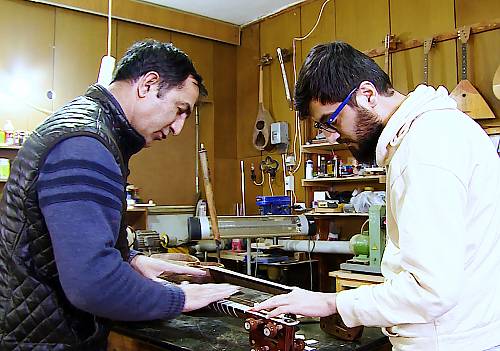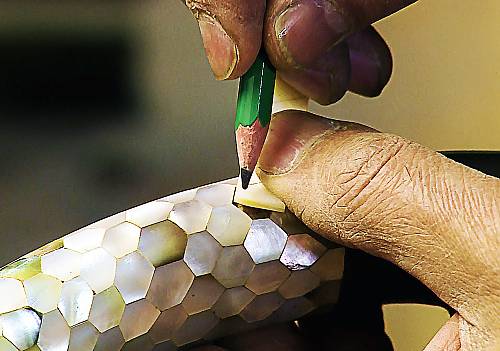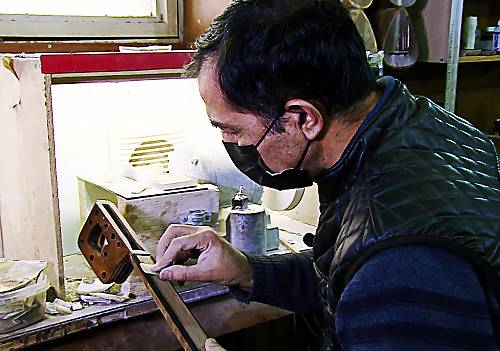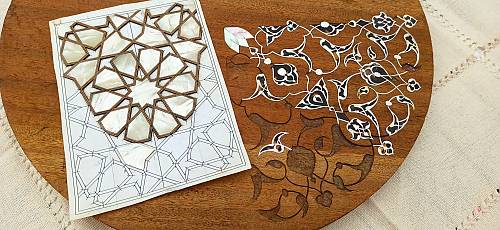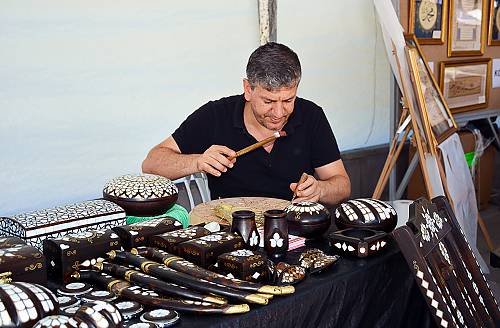Craftsmanship of mother of pearl inlay
Azerbaijan and Türkiye
Inscribed in 2023 (18.COM) on the Representative List of the Intangible Cultural Heritage of Humanity
Mother of pearl inlay is the practice of inserting mother of pearl pieces into wooden objects such as Koran cases, desks, chests, chairs, mirrors, jewel cases and musical instruments. Craftspeople begin by cutting the inner shells of molluscs into different shapes. They draw motifs on a piece of wood, carve out the outlines and shape the mother of pearl pieces, which are then inlaid to the wood. Finally, the surface is polished with sandpaper, burnt for colouring and varnished with melted resin. Practitioners use thick woods such as walnut, ebony and mahogany, preferring dark colours to contrast with the white of the mother of pearl. Geometrical, floral and calligraphic motifs are often used for embellishment. For craftspeople and their families, the element represents a part of daily life and is a source of identity and pride. It is transmitted through apprenticeships and in universities, public education centres and workshops. Today, craftspeople also share their knowledge and skills through social media and online blogs, forums and workshops, thus strengthening social cohesion and cultural exchange across different countries. They also contribute to the preservation of tangible heritage and of social and cultural memory by restoring historical objects exhibited in museums and monuments.


